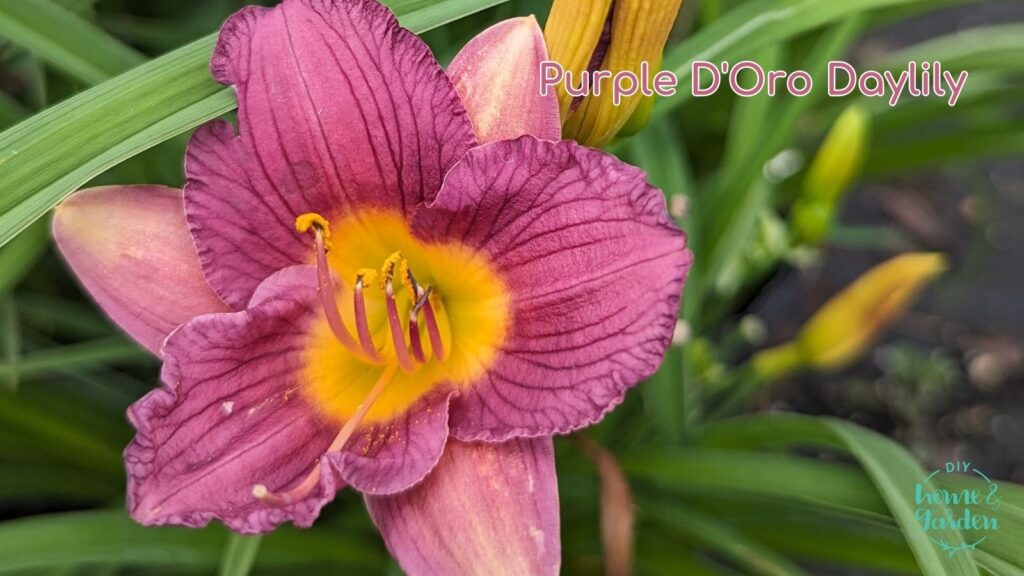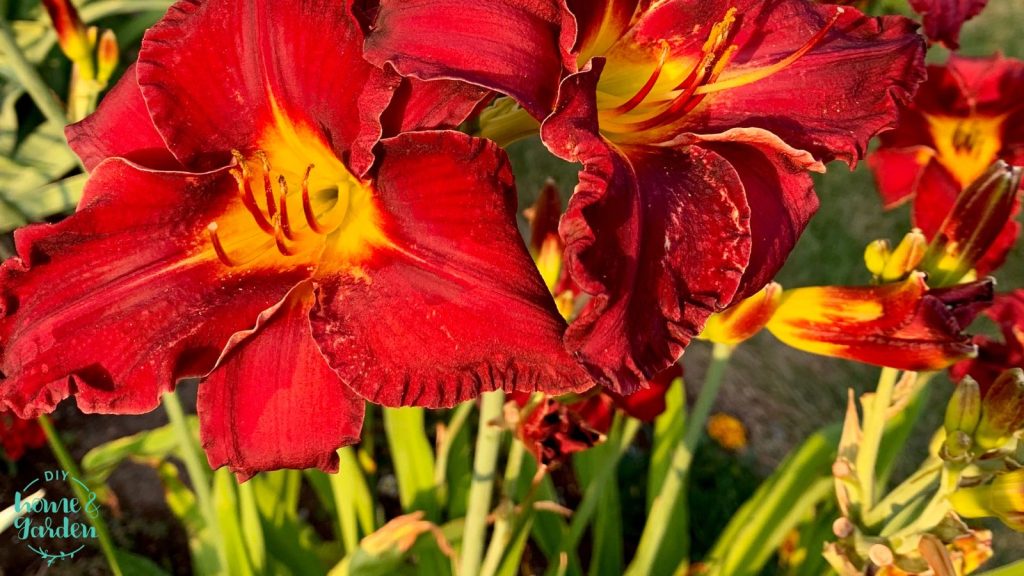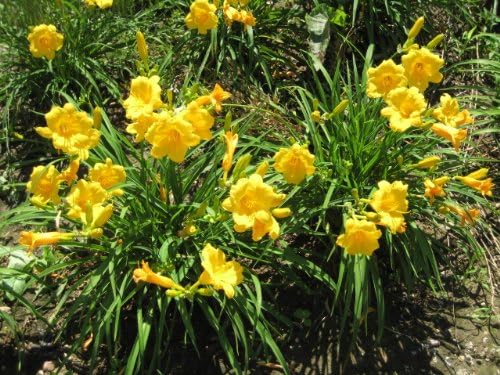Here are the pros and cons of planting daylilies.
You might see the quick spread of color and ask: Are daylilies invasive? The debate around the use of daylilies is a hot topic. Renowned for their vibrant colors and robust growth, daylilies are often a gardener’s delight.
However, like many plants, their benefits come with potential drawbacks.
This article looks into the heart of the question: Are daylilies invasive? We’ll explore both sides of the great daylily debate. Thus, you can gain insights needed to make an informed decision for your garden.
Are Daylilies Invasive? Here are the Benefits of Planting Them in Your Flower Beds
Erosion Control
Daylilies are known for their extensive root systems, which make them excellent at controlling erosion. Their ability to hold soil in place is a significant advantage in areas prone to soil degradation.
Weed Suppression
These plants grow densely and can effectively outcompete weeds, reducing the need for chemical herbicides. This natural form of weed control is both eco-friendly and labor-saving.
Aesthetic Appeal
Daylilies add a splash of color to any garden with their bright blooms and lush foliage. They are incredibly versatile. In other words, they can thrive in various environments, making them popular for landscapers and homeowners alike.
Drought Tolerance
Daylilies are known for their ability to withstand dry conditions. This drought tolerance makes them an excellent choice for gardeners in areas with water restrictions or those looking to reduce water usage in their landscapes.
Low Maintenance Needs
These plants are generally hardy and very resistant to most pests and diseases. This characteristic reduces the need for chemical treatments, making them a more sustainable and low-maintenance option for gardeners.
Long Blooming Season
Daylilies have a lengthy blooming period, often providing color and visual interest in the garden for several weeks. This feature can be particularly valuable in creating a vibrant garden throughout the growing season.
Pollinator-Friendly
The flowers of daylilies attract a variety of pollinators, including bees and butterflies. This attraction can help pollinate other plants in the garden. As a result, they will contribute to the overall health of the local ecosystem.
Versatility in Landscaping
Daylilies come in a wide range of beautiful colors and sizes, making them versatile for use in different garden designs – from borders and beds to containers and rock gardens.
Soil Improvement
The root system of daylilies can help improve soil structure and fertility over time. Their roots can break up compacted soil. So planting them in your flower beds means better water infiltration and air circulation.
Edible Parts
Some varieties of daylilies have edible parts, like flowers and tubers, adding dimension for gardeners interested in edible landscaping.
The Drawbacks of Daylilies

Aggressive Growth
Some gardeners find the vigorous growth of daylilies overwhelming. They can quickly take over garden spaces, overshadowing less robust plants. This quickness can lead to a decrease in biodiversity in your garden.
Maintenance
While daylilies are generally low-maintenance, their rapid spread might require frequent dividing and pruning to keep them in check. It can be time-consuming for gardeners who prefer a more hands-off approach.
Potential to Become Invasive
In certain conditions, daylilies can escape cultivation and invade natural areas. This invasiveness can threaten native plant species and disrupt local ecosystems.
Limited Lifespan of Blooms
While daylilies have a long blooming season, each flower typically lasts only one day. This short lifespan might disappoint gardeners who prefer plants with longer-lasting blooms.
Incompatibility with Certain Plants
Due to their robust growth, daylilies can compete with nearby plants for nutrients, water, and sunlight. It can make them poor companions for more delicate or less competitive species.
Potential for Hybridization
Daylilies are known to hybridize easily, which can concern those looking to maintain the genetic purity of specific varieties or native species in their gardens.
Attraction of Pests
While generally pest-resistant, daylilies can sometimes attract certain pests like aphids, thrips, or daylily rust. These issues, if not managed, can lead to the need for pest control measures.
Limited Wildlife Value
Unlike native plants, daylilies may offer less value to local wildlife regarding habitat and food sources, especially for species that depend on native plant varieties.
Disposal Challenges
The robust root system of daylilies can make it difficult to remove once established. Pieces of root mistakenly left behind in the soil can regrow, leading to ongoing management challenges.
The Takeaway: The Answer to Are Daylilies Invasive Depends on Your POV
The question “Are daylilies invasive?” has no one-size-fits-all answer. It depends on the specific application and the gardener’s needs. They offer significant benefits like erosion control, weed suppression, and aesthetic appeal. However, their potential for aggressive growth and invasiveness should not be overlooked.
As a gardener, it’s crucial to weigh these factors based on your garden’s context and preferences. With careful consideration and management, daylilies can be a very helpful addition to your garden, contributing to its beauty and health without compromising the surrounding ecosystem.
Did you love this article about daylilies? Be sure to follow DIY Home & Garden on social media. Of course, you will find us on Facebook. But we also have an active group of almost 80,000 on an alternative social media site, Mewe.



